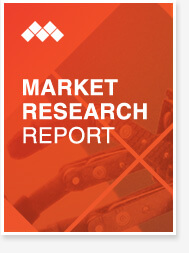Wire and Cable Compound Market worth $22.22 billion by 2030
The report "Wire and Cable Compound Market by Type (Halogenated, Non-halogenated), By Application (Building Wires, Power Cables, Submarine Cables, Communication Cables, Automotive Wiring), By End-use Industry (Construction, Power, Communication, Automotive), and Region – Global Forecast to 2030", global wire and cable compound market is projected to reach USD 22.22 billion by 2030 from USD 15.26 billion in 2025, at a CAGR of 7.8% from 2025 to 2030.
Browse 303 market data Tables and 60 Figures spread through 276 Pages and in-depth TOC on "Wire ad Cable Compound Market by Type (Halogenated, Non-halogenated), By Application (Building Wires, Power Cables, Submarine Cables, Communication Cables, Automotive Wiring), By End-use Industry (Construction, Power, Communication, Automotive), and Region – Global Forecast to 2030"
View detailed Table of Content here - https://www.marketsandmarkets.com/Market-Reports/wire-and-cable-compound-market-237123323.html
The market for wire and cable compounds is influenced by several primary factors, such as the existence of numerous manufacturers, government support, and increased wire and cable compound production. Its exceptional properties, such as high dielectric strength, volume resistivity, and flame retardant formulations, make it an essential material in applications such as building wires, power cables, submarine cables, automotive wiring, and other applications. Compounds are designed to resist ignition and slow flame spread, essential for safety in buildings, vehicles, and industrial settings. Many compounds, especially LSZH (Low Smoke Zero Halogen), emit minimal toxic gases and smoke during fire, meeting stringent safety standards.
Wire and cable compounds maintain performance under elevated temperatures, making them suitable for power transmission and automotive applications. They also exhibit chemical and corrosion resistance, ensuring reliability in industrial, automotive, and outdoor settings where exposure to chemicals is common.
Non-halogenated type dominated the type segment in terms of value in the wire and cable compound market.
Non-halogenated type of wire and cable compounds are increasingly favoured in the market due to their superior safety and environmental advantages. In the event of a fire, non-halogenated compounds produce minimal smoke, which improves visibility and aids evacuation efforts, reducing risk to human life. Unlike traditional halogenated materials such as PVC, non-halogenated compounds do not emit harmful halogen gases (like hydrogen chloride) when burned. This significantly reduces the danger of respiratory injuries and prevents the formation of corrosive acids that can damage electronic equipment and infrastructure. These compounds are engineered to be flame retardant, slowing the spread of fire and providing crucial extra time for evacuation and emergency response.
Increasingly stringent global safety standards and regulations now require the use of low-smoke, zero-halogen (LSZH) materials in public buildings, transportation, data centers, hospitals, and other sensitive environments. Non-halogenated compounds are less harmful to the environment during both use and disposal, aligning with sustainability goals and reducing ecological impact.
The building wires application segment accounted for the largest share, in terms of value, in the wire and cable compound market.
Building wires are a major application segment of the wire and cable compound market because they require specialized properties that these compounds provide, ensuring safety, durability, and reliable performance in construction environments. Building wires must offer a high degree of electrical insulation to prevent electrical leakage and ensure user safety in residential, commercial, and industrial buildings. Compounds used in building wires prevent moisture ingress, which is critical for maintaining performance and preventing short circuits or corrosion in wiring embedded within walls, floors, and ceilings. Building codes and safety regulations demand that building wires be flame-retardant to minimize fire risks. Many compounds are engineered specifically to meet these stringent fire safety standards. Building wires are often subject to physical stress during installation and throughout their service life. Compounds impart mechanical strength, flexibility, and resistance to abrasion, ensuring long-term reliability.
North America accounted for the largest share of the wire and cable compound market in terms of value and volume.
North America accounted for the largest share of the wire and cable compound market, with the US leading the market in the region. The growth in the wire and cable compound market in this region is driven mainly by mature energy infrastructure and smart grid investments. The region has well-established power transmission and distribution networks; ongoing investments target modernization, reliability, and the deployment of smart grids. This drives demand for advanced, durable, and safe cable compounds that can handle increased performance requirements and new technologies. North America, especially the US and Canada, is experiencing significant expansion of renewable energy projects (wind, solar) and electric vehicle (EV) charging infrastructure. These applications require specialty compounds that ensure weather resistance, thermal stability, and fire safety for cables in harsh and critical installations.
North America enforces stringent safety, flame retardancy, and low-smoke standards for building, industrial, and transportation cabling. As a result, there is elevated demand for halogen-free, low-smoke, and environmentally friendly compounds that meet or exceed these regulations.
Key Players
Prominent companies include Borealis GmbH (Austria), Dow (US), Syensqo (Belgium), Evonik Industries AG (Germany), DuPont (US), Avient Corporation (US), Eastman Chemical Company (US), Exxon Mobil Corporation (US), Hanwha Solutions Corporation (South Korea), SCG (Thailand), Trelleborg AB (Sweden), Electric Cable Compounds, Inc. (US), Alphagary (UK), Riken Technos Corp (Japan), Melos GmbH (Germany), and ENEOS NUC Corporation (Japan).
About MarketsandMarkets™
MarketsandMarkets™ has been recognized as one of America's Best Management Consulting Firms by Forbes, as per their recent report.
MarketsandMarkets™ is a blue ocean alternative in growth consulting and program management, leveraging a man-machine offering to drive supernormal growth for progressive organizations in the B2B space. With the widest lens on emerging technologies, we are proficient in co-creating supernormal growth for clients across the globe.
Today, 80% of Fortune 2000 companies rely on MarketsandMarkets, and 90 of the top 100 companies in each sector trust us to accelerate their revenue growth. With a global clientele of over 13,000 organizations, we help businesses thrive in a disruptive ecosystem.
The B2B economy is witnessing the emergence of $25 trillion in new revenue streams that are replacing existing ones within this decade. We work with clients on growth programs, helping them monetize this $25 trillion opportunity through our service lines – TAM Expansion, Go-to-Market (GTM) Strategy to Execution, Market Share Gain, Account Enablement, and Thought Leadership Marketing.
Built on the 'GIVE Growth' principle, we collaborate with several Forbes Global 2000 B2B companies to keep them future-ready. Our insights and strategies are powered by industry experts, cutting-edge AI, and our Market Intelligence Cloud, KnowledgeStore™, which integrates research and provides ecosystem-wide visibility into revenue shifts.
To find out more, visit www.MarketsandMarkets™.com or follow us on Twitter , LinkedIn and Facebook.
Contact:
Mr. Rohan Salgarkar
MarketsandMarkets™ INC.
1615 South Congress Ave.
Suite 103, Delray Beach, FL 33445
USA : +1-888-600-6441
Email: sales@marketsandmarkets.com
Visit Our Website: https://www.marketsandmarkets.com
- Triangulate with your Own Data
- Get Data as per your Format and Definition
- Gain a Deeper Dive on a Specific Application, Geography, Customer or Competitor
- Any level of Personalization
- What are the Known and Unknown Adjacencies Impacting the Wire and Cable Compound Market
- What will your New Revenue Sources be?
- Who will be your Top Customer; what will make them switch?
- Defend your Market Share or Win Competitors
- Get a Scorecard for Target Partners







